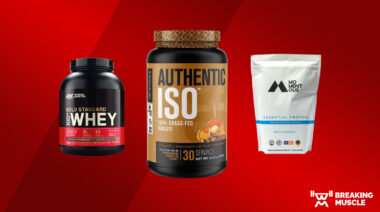Scientific literature clearly shows that greater protein consumption is associated with superior body composition. But still, a few studies have failed to demonstrate this link. A recent review of this literature asked the question, “How much more protein is required to make a difference?” The answer: a lot.
The review examined 51 previous studies on protein intake and body composition. Of these 51 studies, 35 showed a clear link between greater protein intake and better body composition. But 16 of the studies failed to show a link. Can science explain why those 16 studies didn’t show a link? The authors propose that those studies simply didn’t feed their test group enough protein.
In the studies that showed a link, protein consumption was over 58% higher than the control group. In the studies that did not show a link, protein consumption was only 39% higher than the control group. To show better body composition than the control group, more protein was required.
The authors then examined 25 studies on weight loss. Of those 25 studies, 17 showed weight loss in the test group while 8 did not. The 17 groups that showed weight loss consumed an average of 29% more protein than the control groups. The 8 groups that did not show weight loss only consumed about 5% more protein than the control groups. To experience more fat loss than the control group, more protein was required.
What does all this mumbo jumbo about test groups and control groups mean to you? You are the test group. Your control group is the status quo – everyone else. If you want to see better gains than everyone else, then you must change. But you must not only change – your change must be great. You may need to eat up to 60% more protein than the status quo to see a difference in body composition. So if your diet seems extreme compared to everyone else, then don’t fret. That may just mean you’re on the right track.
References:
Bosse, John D, and Dixon, Brian M. “Dietary protein in weight management: a review proposing protein spread and change theories.” Nutrition and Metabolism 9:81, 2012.
Photo courtesy of Shutterstock.






